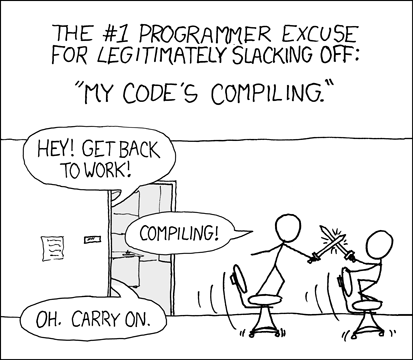The Value of Fast CI
(3 min)

Continuous Integration (CI) automates repetitive tasks to minimize mistakes and increase efficiency. Instead of needing to remember to run various test suites, build steps, and then deploy, engineers can simply push changes and wait while CI handles the rest. The larger the coverage area of CI, the higher the potential value to an engineering organization.
However, the more that is added to CI, the more time engineers spend waiting for it to finish. Context switching to other tasks while CI runs can mitigate time lost to waiting, but incurs its own productivity cost.
Furthermore, as the number of CI operations increases, so too does the likelihood of transient failures. Some transient failures may only cost a few seconds, others several minutes, but all have the potential to increase the wait time. It isn't unrealistic for multiple failures to double or even triple the overall time.
To minimize these negative side effects, CI needs to be both fast and reliable.
Value#
CI is generally billed at around $0.01/min while engineers cost 2 orders of magnitude more. To help illustrate this comparison, imagine an engineer at $1/min which is 100 times the base price of a minute of CI. Then consider the following basic build, test, and deploy pipeline with a test fan out:
At peak the CI cost is $0.04/min or 4% the cost of the engineer waiting on the result.
Now, imagine increasing the test concurrency from 4 to 16 to cut the duration in half. Even with an assumption of significant overhead per test job the engineer time savings dwarfs the CI cost increase:
| Test Jobs | Duration | Cost | |
|---|---|---|---|
| Before | 4 | 7.0 min | $0.28 |
| After | 16 | 3.5 min | $0.56 |
Effectively, by paying $0.28 more on CI, you're saving $3.50 of engineer time. Put another way the peak CI rate was 16% of the engineer rate.
In many scenarios, more than one person may be waiting on CI results, which only improves the exchange rate.
- a few engineers validating a production fix
- product incrementally working with engineering through a review environment
Since CI is at the core of engineering workflows, it is a common bottleneck. Improvements to the speed of CI improve the productivity of the entire organization, and the more efficient the exchange of CI resources for engineer time, the greater the net savings.
Improvement#
Besides the sheer number of CI operations, the following factors contribute to wait times:
- hardware power
- cache scope & overhead
- concurrency
- flakiness
Imagine making improvements across the board:
- using machines that are more than twice as powerful as the popular CI providers
- caching everything with little to no overhead
- maximizing the benefit of concurrency without steep diminishing returns
- minimizing flakiness by easily caching all external resources
What could your organization do with CI that is 2-10 times faster?
Thanks to Cedar CI, you don't have to wonder. You can enhance your CI in just a few minutes to achieve 2-10 times better performance.